2-methylresorcinol
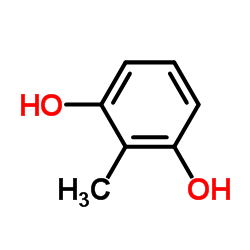
2-methylresorcinol structure
|
Common Name | 2-methylresorcinol | ||
|---|---|---|---|---|
| CAS Number | 608-25-3 | Molecular Weight | 124.137 | |
| Density | 1.2±0.1 g/cm3 | Boiling Point | 282.1±7.0 °C at 760 mmHg | |
| Molecular Formula | C7H8O2 | Melting Point | 114-120 °C(lit.) | |
| MSDS | Chinese USA | Flash Point | 142.9±12.8 °C | |
| Symbol |

GHS06 |
Signal Word | Danger | |
| Name | 2-Methylresorcinol |
|---|---|
| Synonym | More Synonyms |
| Density | 1.2±0.1 g/cm3 |
|---|---|
| Boiling Point | 282.1±7.0 °C at 760 mmHg |
| Melting Point | 114-120 °C(lit.) |
| Molecular Formula | C7H8O2 |
| Molecular Weight | 124.137 |
| Flash Point | 142.9±12.8 °C |
| Exact Mass | 124.052429 |
| PSA | 40.46000 |
| LogP | 1.22 |
| Vapour Pressure | 0.0±0.6 mmHg at 25°C |
| Index of Refraction | 1.595 |
CHEMICAL IDENTIFICATION
HEALTH HAZARD DATAACUTE TOXICITY DATA
|
| Symbol |

GHS06 |
|---|---|
| Signal Word | Danger |
| Hazard Statements | H301-H315-H319-H335 |
| Precautionary Statements | P261-P301 + P310-P305 + P351 + P338 |
| Personal Protective Equipment | Eyeshields;Faceshields;Gloves;type P2 (EN 143) respirator cartridges |
| Hazard Codes | T:Toxic |
| Risk Phrases | R25;R36/37/38 |
| Safety Phrases | S26-S36-S45-S37/39-S28A |
| RIDADR | UN 2811 6.1/PG 3 |
| WGK Germany | 3 |
| RTECS | VH2009500 |
| Packaging Group | III |
| Hazard Class | 6.1 |
| HS Code | 2907299090 |
| Precursor 10 | |
|---|---|
| DownStream 10 | |
| HS Code | 2907299090 |
|---|---|
| Summary | 2907299090 polyphenols; phenol-alcohols。supervision conditions:AB(certificate of inspection for goods inward,certificate of inspection for goods outward)。VAT:17.0%。tax rebate rate:9.0%。MFN tariff:5.5%。general tariff:30.0% |
|
Cross-elicitation responses to 2-methoxymethyl-p-phenylenediamine under hair dye use conditions in p-phenylenediamine-allergic individuals.
Br. J. Dermatol. 172(4) , 976-80, (2015) The factors influencing elicitation responses in individuals allergic to p-phenylenediamine (PPD) in hair dyes are not well understood.Investigation of the elicitation response to the new, less-sensit... |
|
|
Expanding cavitand chemistry: the preparation and characterization of [n]cavitands with n>=4.
Chemistry 7(8) , 1637-45, (2001) The preparation of cavitands composed of 4, 5, 6, and 7 aromatic subunits ([n]cavitands, n=4-7) is described. The simple, two-step synthetic procedure utilized readily available starting materials (2-... |
|
|
[Long-term preservation of DNA in aqueous solutions in the presence of the chemical analogues of microbial autoregulators].
Mikrobiologiia 75(5) , 662-9, (2006) The fact of long-term preservation of the physicochemical properties of DNA molecules in aqueous solutions in complexes with methylresorcinol, hexylresorcinol, and tyrosol, the chemical analogues of m... |
| 2-methyl-resorcino |
| 2-methyl-1,3-dihydroxybenzene |
| 2-Methylresorcin |
| Toluene-2,6-diol |
| 2,6-Toluenediol |
| 2-methylbenzene-1,3-diol |
| 2-Methylresocinol |
| Rodol MRP |
| 2-Methylbenzol-1,3-diol |
| 1,3-Benzenediol, 2-methyl- |
| MFCD00002271 |
| 2-methylresorcinol |
| 2,6-Dihydroxy |
| 2-methyl-resorcinol |
| 2-MR |
| 2-Methyl-1,3-benzenediol |
| 2,6-Dihydroxytoluene |
| JAROCOL 2MR |
| 2-methyl-benzene-1,3-diol |
| EINECS 210-155-8 |
| 1,3-dihydroxy-2-methyl-benzene |
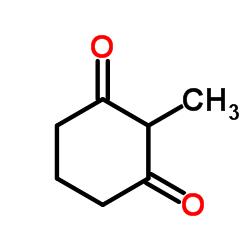 CAS#:1193-55-1
CAS#:1193-55-1 CAS#:5673-07-4
CAS#:5673-07-4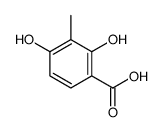 CAS#:4707-49-7
CAS#:4707-49-7 CAS#:387-46-2
CAS#:387-46-2 CAS#:116371-82-5
CAS#:116371-82-5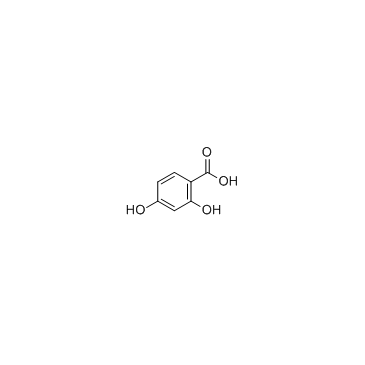 CAS#:89-86-1
CAS#:89-86-1 CAS#:6971-52-4
CAS#:6971-52-4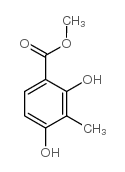 CAS#:33662-58-7
CAS#:33662-58-7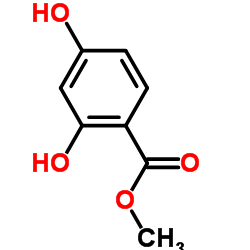 CAS#:2150-47-2
CAS#:2150-47-2 CAS#:39503-26-9
CAS#:39503-26-9 CAS#:95184-99-9
CAS#:95184-99-9 CAS#:50544-72-4
CAS#:50544-72-4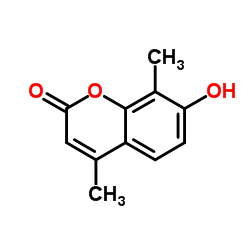 CAS#:4115-76-8
CAS#:4115-76-8 CAS#:91963-11-0
CAS#:91963-11-0![2-METHOXY-3-METHYL-[1,4]BENZOQUINONE structure](https://image.chemsrc.com/caspic/299/2207-57-0.png) CAS#:2207-57-0
CAS#:2207-57-0 CAS#:21861-21-2
CAS#:21861-21-2 CAS#:591-49-1
CAS#:591-49-1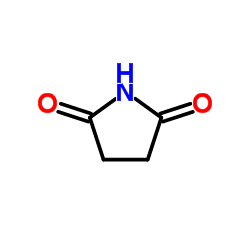 CAS#:123-56-8
CAS#:123-56-8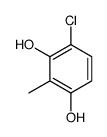 CAS#:502485-28-1
CAS#:502485-28-1
